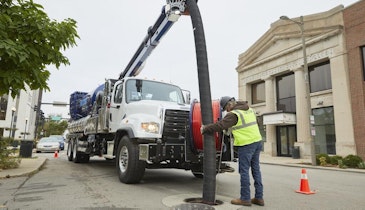I woke up a little late this morning. I scrambled to shower and get dressed and ran out the door. On the 20-minute drive to work, I thought briefly about a subject for this column. When I finally sat down at my desk, one of the first images I saw was a water tower emblazoned with Flint Water Plant in bold block letters. That’s Flint, Michigan. The story was about the least healthy cities in the U.S.
I clicked through the story, glancing over everything from the obesity rate in Pueblo, Colorado, to the prevalence of sexually transmitted infections in Pine Bluff, Arkansas. When I finally got to the Flint page, there was the water tower again. Flint is the birthplace of General Motors and was once a hub of automotive manufacturing. But as the automotive jobs went away, the city’s problems grew. The write-up didn’t mention Flint’s recent water crisis and focused instead on other health concerns, but the water crisis is still synonymous with the city.
Water is not scarce in the upper Midwest, which makes it much easier to take it for granted. In Flint, the problem was poor treatment and distribution practices rather than inadequate supply. As I read through the story, I couldn’t help but compare Flint to a much different story in El Paso, Texas.
To be fair, while water supplies are nowhere near as plentiful in the western corner of Texas as they are in the Great Lakes region, El Paso is not hurting. It is thriving. In fact, people from all over the world visit El Paso to learn more about its progressive water management practices.
El Paso Water invests resources in real-time hydrological programs at the same time it launches longer-term projects to ensure water is there for future generations. This planning and implementation process constantly evolves.
In a normal year, the Rio Grande can supply half of the water El Paso needs. In dry years, the river’s contribution shrinks dramatically or disappears altogether, so El Paso supplements its supply with water from the Hueco and Mesilla aquifers that underlie the region.
In drought years, Hueco’s contribution to the total water supply almost doubles. This drawdown on the aquifer is not a sustainable solution because aquifers eventually can be tapped out, too. To complicate matters further, the Hueco water is not all drinkable. It holds about 10 million acre-feet of freshwater and 30 million acre-feet of brackish water.
Water reclamation is one of the acclaimed parts of El Paso’s water success story. The program was developed in part to maintain the Hueco aquifer’s freshwater volume and keep brackish water at bay. The utility is credited with operating one of the world’s first wastewater treatment plants whose product meets human consumption standards. Some 6 million gallons of reclaimed water are utilized across the city’s mesa and valley every day.
Flint and El Paso may not have much in common, but all water utilities share the common purpose of providing life to the communities they serve. The way you handle that responsibility has a huge impact on the health and future of your communities. El Paso is taking progressive steps to secure their future. Check out their story on page 24.
Enjoy this month’s issue.





